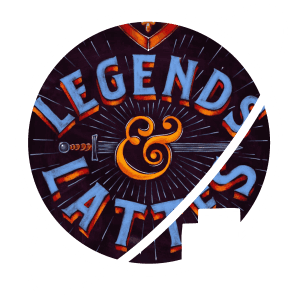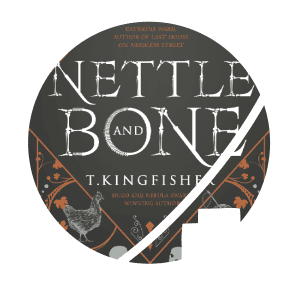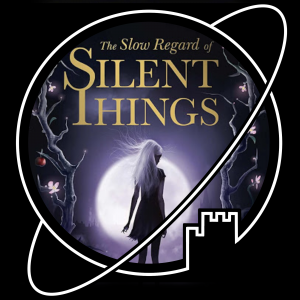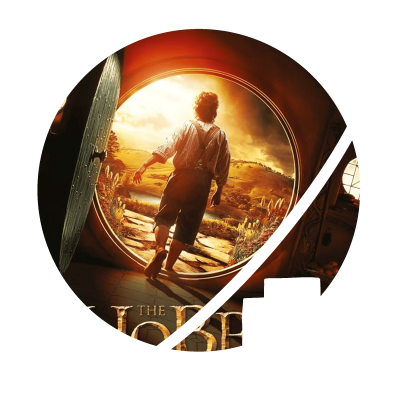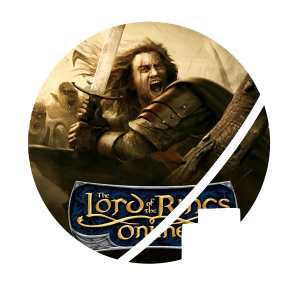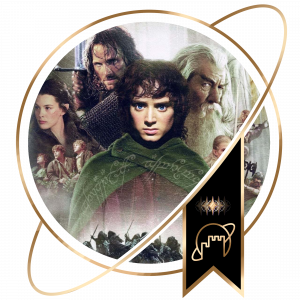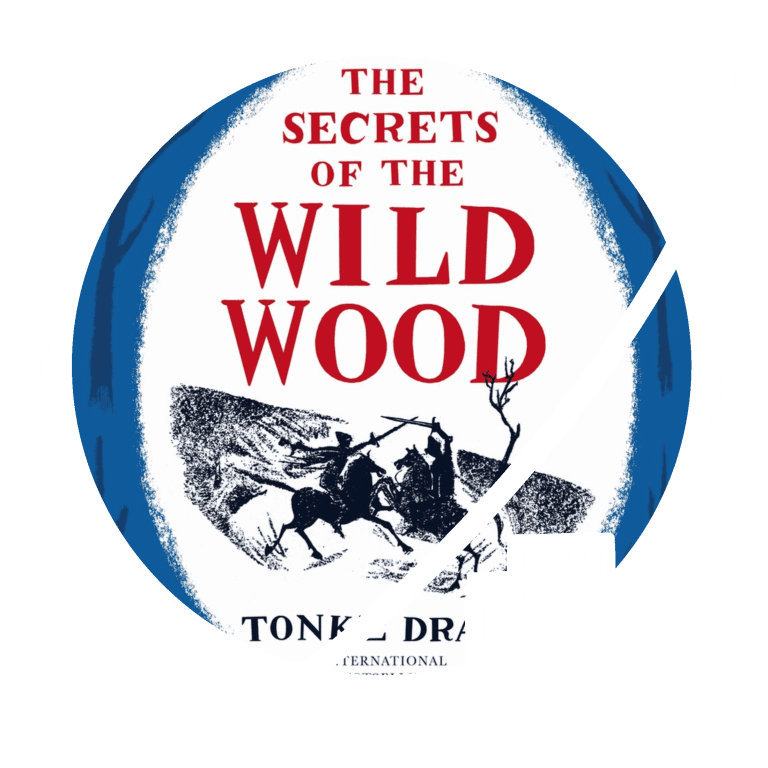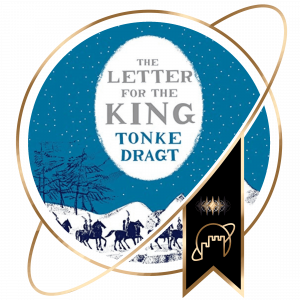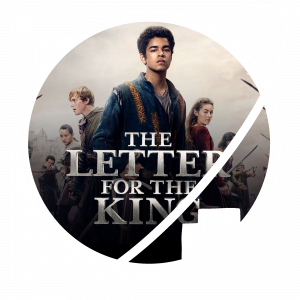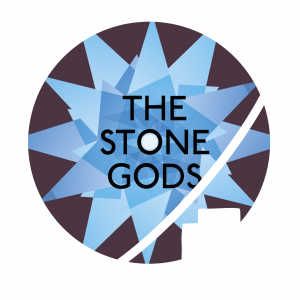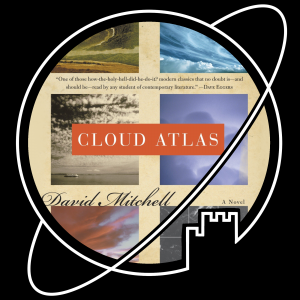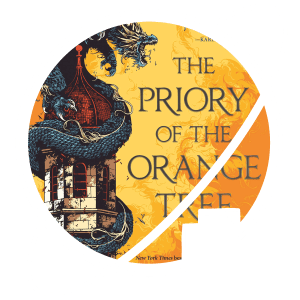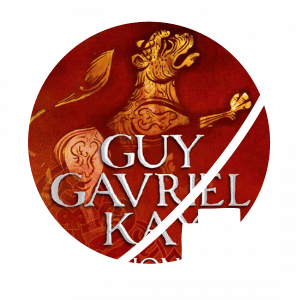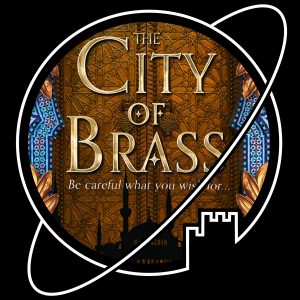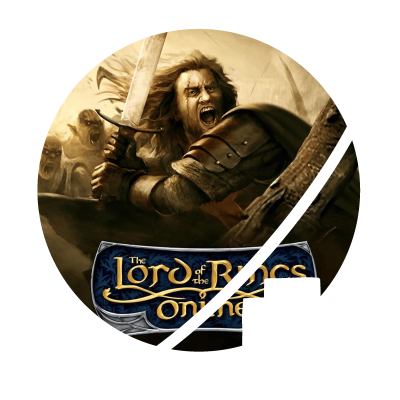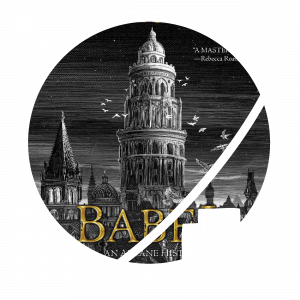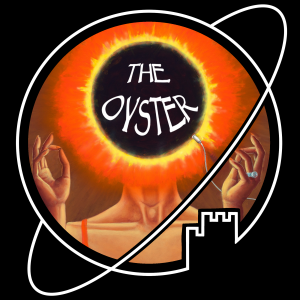A curated Collection of Fantasy and Science Fiction Media
Recent Updates
- Novel written by Patricia A. McKillip
- Published in 7 June 2005
- Standalone


Listened to the audiobook with Gabrielle de Cuir – well narrated, but I did have to speed her up by 1.8x because of her pace. That did make the book a nice and short listen at ~6 hours.
Warning: this review is as much about my character development as a reviewer as it is about Od Magic.
I am in a busy period at work and I have less time and energy to spend on reading, so I decided to re-read something rather than picking up something new.
I remember reading Od Magic 6 years ago when I had just decided I wanted to get back into reading and wanted to branch out a bit beyond the obvious big names such as George R.R. Martin and Robin Hobb. I also remember disliking Od Magic, even though some of the whimsical atmosphere did stick with me.
I decided to re-read it as a bit of a challenge to myself: was Od Magic really as bad as the notes I took back then made it out to be? Or has reading a lot more over the past half decade made me appreciate Od Magic more?
I am glad to find that the second is true: having read a lot more these past years, I have come to understand what Od Magic tried to achieve much better. My tastes have also developed, and I have come to appreciate low stakes, low violence, atmospheric storytelling a lot more. I love grimdark stories, but not every book needs to be A Song of Ice and Fire or First Law.
So on second read, I liked Od Magic. It is a comfortable cozy fantasy avant la lettre with no pretentions, likeable characters and a great atmosphere.
I probably shouldn’t overshoot this point: Od Magic isn’t brilliant, and it is not the type of book that makes me come back to fantasy all the time. But as a simple feel good read or perhaps something to read to children, it just about manages it make my list of recommendations.
What lets Od Magic down is definitely the middle section. After a nice introduction that sets up the story well, the middle is a bit of a messy tangle of storylines following different of different characters looking for each other in the Twilight Quarter, the mysterious part of town filled with minor magics and nightlife that is easily the book’s best backdrop (though I would have loved a little more detail).
Unfortunately, I found there is too much in-and-out and repetition in this section – it just lacks structure and I can understand why I zoned out the first time I read Od Magic. You’re not reading Od Magic for the plot anyway, so perhaps McKillip or her editor should have simplified this part of the story or cut one or two the lines.
Still, even though the middle is messy and the ending isn’t exactly unpredictable or spectacular, I did find the conclusion satisfying.
That, too, is a marked difference from my first read, because I remember being disappointed by the lack of a twist or reveal and especially the absence of real fireworks. But this time, I actually enjoyed the mild finale. It fits the book, which is comfortable and calm throughout. Why should then ending shake that up?
I guess that the main takeaway from this review is that Od Magic is just very mild, and for me it takes a certain mindset to appreciate that. But if you happen to like mild fantasy, I would certainly recommend it.
The fact that I now see the value of Od Magic shows to me that I have learned to appreciate things that aren’t necessarily my style. The past years of reading and writing reviews have helped me bring into focus better what my personal likes and biases are, and to separate these from the inherent quality of a story. I have learned that a story that does not fit my particular niche can still be great at what it wants to do. That lesson alone made re-reading Od Magic worth the time.
Tagged:
See also:
- Movie directed by Peter Jackson
- Based on The Hobbit by J.R.R. Tolkien
- Starring Ian McKellen, Martin Freeman, Richard Armitage, James Nesbitt, Ken Stott, Cate Blanchett and others
- Released 28 November 2012
- Runtime: 169 minutes (theatrical edition) or 182 minutes (extended edition)

(Nota bene: this review relates to the extended edition of the movie. Though I’ve once seen the theatrical editions of the The Hobbit trilogy, the extended editions always have my preference, and I’ve seen them more times than I can count.)
Let’s start with the obvious caveat, one most people will probably agree with (some more fervently than others): The Hobbit trilogy is not of the same quality as The Lord of the Rings trilogy. The use of CGI is arguably too much, the writing and pacing are less on point and they gave Peter Jackson a little too much free rein to express his very niche sense of humour. These are just a few of the examples that prevent this trilogy from being the masterpiece The Lord of the Rings is. Still, I like this movies very much, maybe more than they deserve. As such, I rewatch them all each year, just as I do with the The Lord of the Rings.
An Unexpected Journey was very much an unexpected experience all those years ago. It’s hard to imagine now, but for years it seemed like there wouldn’t be any other movies (or let alone series) set in Middle-Earth. I was very grateful to get the opportunity to revisit this beloved universe, with familiar faces such as Sir Ian McKellen, Hugo Weaving and Cate Blanchett reprising their roles. Compared with the screenwriters’ representation of Tolkien’s themes, Howard Shore’s music and the stunning landscapes of New-Zealand made it feel like I was returning home after a long time away.
I shall admit I find it hard to gauge how much my enjoyment of these movies is determined by my nostalgia for The Lord of the Rings, or even the original source material itself. Would people like them better or worse if they weren’t in the shadow of these other media? I can’t say.
Something I can say, is that I very much like Martin Freeman’s portrayal of a younger Bilbo Baggins, a respectable hobbit drawn into a dangerous adventure he doesn’t quite understand. His (often subtle) facial expressions really give depth to a character that has to be able to be funny and endearing, as well as a protagonist with emotional depth.
However, the adaptation of Thorin Oakenshield (masterfully portrayed by Richard Armitage) is what probably resonated the most with me. The narrative of a banished king trying to reclaim his heritage with a small band of loyal warriors is in itself gripping enough. Yet, An Unexpected Journey introduces a Thorin with internal struggles that I feel don’t often get explored in media: the personal threat of a genetic mental disorder you might inherit. Though I (nor the DSM, probably) wouldn’t normally consider ‘dragon-sickness’ a mental disorder – it seems more like a magical influence or a higher susceptibility to greed/paranoia – the other characters treat it as such. This is the build-up of (potentially) great characterization. Is Thorin prone to the same ‘sickness’ that seems to run in his family? If so, does this undermine the leadership capabilities he clearly has? Can he give his people what they need by reclaiming their home and the dangerous wealth that lies there?
Though, as I already mentioned, there are some aspects of An Unexpected Journey I’m less fond of. At times, the humour can be jarring, in the form of anachronisms, inappropriate ‘final words’ and the interpretation of Radagast the Brown (though I love Sylvester McCoy). Furthermore, there are some adaptation choices I have ambivalent feelings about. For example, I like the inclusion of an antagonist to weave most of the random misadventures on the road together, but I don’t see why it couldn’t have been Bolg instead of Azog (something I will feel a lot stronger about when we arrive at The Battle of the Five Armies). Additionally, the added time pressure of the quest always seemed unnecessary to me, and only results in some awkward scenes throughout the trilogy.
All in all, it might be fair to say An Unexpected Journey is something of a hot mess, with a lot to say about it, both positive and negative. Frankly, his review is already longer than I thought it would get. To offer some final thoughts… If you’ve read the book, I feel this first movie most captures the whimsical adventurous feel of The Hobbit. It’s worth a try if you’re somehow unfamiliar with all the other movies and books, but want a taste that of Middle-Earth that is a little more accessible. Tolkien purists should give it a wide berth, though.
Also, this movie doesn’t feature enough Smaug. Luckily for me, that what the next movie is for.
Tagged:
- Novel written by Tonke Dragt
- Published in April 1965
- Sequel to The Letter for the King

If you’ve read my review of the first part of this series, you’ll know I think The Secrets of the Wild Woods is one of the best, if not the best, fantasy books ever written in Dutch. Yes, it is originally intended for children, and yes, that is noticeable. But even for grown-ups, the book is so full of atmosphere and tension that it is tough to put away.
Where the The Letter for the King is a bit more cautious about how it approaches the many dangers of an adventurer’s life (Dragt sanitises some, simply dodges others) to fit on a kid’s bookshelf, The Secrets of the Wild Woods does away with that approach somewhat and delves deeper into the dark side of a medieval world full of knights and riders in red: there’s war, there’s fighting, there’s killing and dying.
Though the setting never becomes grim or dark, The Secrets of the Wild Wood exchanges a little of the fairy tale-esque atmosphere of the first book for a slightly harsher view of knighthood, and I love it. For me, it compares to the stories of King Arthur and his knights of the round table – there’s quests, heroics, deceit, a clear sense of right and wrong, and honour even among the enemy.
As a result of the dangers feeling more tangible and real, the book’s pacing and tension turn up a notch too – there’s more happening at the same time, and Tiuri’s (and the other characters’) predicaments grow more dire. The plot is a little more involved and you’ll find yourself flipping back to the map more often than before.
It brings Secrets of the Wild Woods closer to the more traditional grown-up fantasy fare whilst still retaining some of that beautiful simplicity. Perhaps we could see Secrets of the Wild Woods as a bridge for a young reader from children’s fantasy to YA or adult books.
I would recommend Secrets of the Wild Woods to anyone who enjoyed The Letter for the King. Even if you finished The Letter for the King and thought it was ok, but were put off a little because it was too much a children’s book for you, maybe still give this one a go: Secrets of the Wild Woods brings a little more grim to an otherwise noble world and a plot with a few more twists and turns.
Plus, it heavily features Knight Ristridin who is hands down the best character in all of Dutch speculative literature, if not in all of fantasy literature the world over. He’s the Dutch Aragorn. Knight Ristridin is the reason I attend H.E.M.A./historical fencing training every week. You need more of Knight Ristridin in your life.
Tagged:
See also:
- Movie directed by Bertrand Bonello
- Starring Léa Seydoux, George MacKay and others
- Spoken in French and English
- Released 7 February 2024
- Runtime: 145 minutes

The Beast has a very atmospheric, almost hypnotic style of cinematography, which at the same time feels quite ominous. Just like the main character Gabrielle you can’t help feeling like something bad is going to happen at any moment, a feeling aided by the unsettling music that accompanies many of the scenes.
The movie touches upon many different themes, like desire, intergenerational trauma, and ultimately the question of what makes us human. While these are all interesting themes, I felt that some of them could have been explored a bit more in-depth. For example, the description of the movie made me think that humanity’s relationship with AI was going to be a big part of this movie, but it was really only used as a backdrop. I think if they had tried to put slightly fewer ideas into the movie, the rest may have had more space to fully develop.
Moreover, in the second half of the movie it turned from a period drama to a full on thriller, and I enjoyed that half significantly less. I realise that this is mostly because I just do not enjoy horror/thiller in general, but I still feel that even so, this part took longer than necessary.
What did stand out to me, were the performances by the two main actors. Both of them did an incredible job in portraying their roles throughout the different ‘reincarnations’. The characters were both markably distinct, and still believably the same ‘person’. I also really enjoyed the mirroring of images, phrases or whole scenes between the different time periods. This really added to making the story one whole, instead of three separate narratives.
Overall, this movie did give me something to think about, and while I was cycling home from the cinema I felt like I had just returned from a completely different reality. So in the end I would say it was a worthwhile experience.
- Novel written by S.A. Chakraborty
- Published in 7 March 2023
- Part one of a planned Amina al-Sirafi-trilogy


The Daevabad trilogy remains one of my all time favourite fantasy series, so you can imagine my excitement when I saw that a new Chakraborty had been released. Unfortunately I did not end up loving this one quite as much as the Daevabad trilogy, but the book still has much to recommend. I really liked that the protagonist was a bit older than the average fantasy protagonist. Because of this Amina’s internal struggles were refreshingly different: no annoying teenage angst, and the book was not driven by the romantic tension of some complicated and tortured love triangle. Instead, Amina’s thoughts were more focussed around the dilemma’s of leaving her child behind while providing for her family. A struggle many working parents will surely be able to relate to.
The book also does quite well on the representation front in general, and while a lot of the story was taken up by the ‘getting the old crew together’ build-up, it was fast-paced enough that it did not get boring. The plot itself was not spectacularly original, but I would say it served it’s purpose.
So overall I enjoyed the book, but it did not stand out to me like the Daevabad trilogy did. As always, it’s the characters that make or break the story for me, and while I liked them, I cannot say that I loved them. For example, three years after reading The Empire of Gold I am still able to vividly picture many of its side characters and to explain their complicated political motivations, while except for Amina herself, the crew-members in this book already seem to have blurred together in my mind.
Then again, there is definitely a lot of potential there, and with the Daevabad trilogy the first book was also by far my least favourite of the three. So when part two is released, count me in for sure!

Listened to the audiobook with Amin El Gamal and Lameece Issaq – well narrated.
Unlike most of our curators, I rather disliked Chakraborty’s City of Brass – it has been a while since I read it, but I mostly remember teenage drama taking all the life out of what could have otherwise been an interesting story in an original setting. I reread my review and I noted that Chakraborty’s style would perhaps be better suited to a more light-hearted tale (this is foreshadowing).
The Adventures of Amina al-Sirafi is not a more light-hearted tale. Quite the opposite, in fact: in Amina al-Sirafi, Chakraborty lost all the teenage drama and made her protagonist a retired pirate captain who is a mother first and foremost. I like that change of pace, and as a result, I think The Adventures of Amina al-Sirafi fit me a whole lot better. Whether Amina al-Sirafi also fits Chakraborty’s style better is another question altogether.
I’ve only read two of her books, so I should perhaps be careful to judge, but my impression is that Chakraborty tends to just keep it simple in her world building: less of a carefully constructed set of rules or a build up towards a certain end goal, more of a series of go-with-the-flow, rule-of-cool impressions.
The Adventures of Amina al-Sirafi is no different. None of the magical plot elements are ever really explained; they just exist and the reader is along for the ride. Especially towards the end of the book, a whole lot happens that raised my eyebrows a couple of times, but the reader is just expected to take it in stride.
I found this particularly frustrating because at the start of the novel, Chakraborty seems to be making an effort to ground her fantasy novel in the real world 12th century Middle-East, which initially had me hyped up – but it soon becomes apparent that she is liberally pasting staples of the fantasy genre over her historical setting.
The plot is written in a similar style. The first half of the book skirts the edge of cliché with how closely it follows the predictable tropes of ‘retired hero blackmailed into one last job’ and ‘getting the boys back together’. Chakraborty doesn’t execute these tropes poorly, but I feel this section of the book takes way more time to tell than it probably should have (especially considering that I still never really connected with the rest of the crew Amina is getting back together).
The second half of the novel is a highly-paced and action-packed flow that keeps your attention. Unfortunately, I felt the resolution of the plot isn’t particularly well-constructed and at times felt like it was written on the fly. It is best not to overthink it too much. Then again, I don’t think Chakraborty really encourages the reader to stop and think about it – that is not the kind of plot that she is writing.
It is, however, the kind of plot that I want to read. As a result, I lost my investment in the story towards the end of the novel and I might even have zoned out for some of the big end fights. I guess it is a sign on the wall.
Overall, I didn’t dislike The Adventures of Amina al-Sirafi, but I wouldn’t exactly recommend it to people like me either. I’ve been going back and forth on my star rating, and I probably would have given it 2.75 stars if that were a thing we did on this website. To me, it just falls narrowly short: lacking slightly in depth, lacking slightly in character; the plot in the first half is just a bit unoriginal, the resolution in the second half not quite earned – and the novel is still over 16 hours of listening.
Bluntly put, The Adventures of Amina al-Sirafi is just too long, just slightly too ambitious for what it offers. If this would have been a quick and simple 8-hour read that I would have blazed through in a week, I would have likely rated it a whole lot higher.
As a result, I remain convinced that Chakraborty’s style is just a little ‘light’ for the kind of novels she is writing. I’m not sure I’ll pick up another of her books, but I might be interested if she veered off into a more intentionally simple and humorous direction, where I feel her original ideas might come into their own a lot better.
Tagged:
See also:
- Video game developed by Standing Stone Games
- Published by Daybreak Game Company
- Released in April 24, 2007
- Massively multiplayer online role-playing game
- Platforms: Microsoft Windows, OS X
- Playing time: hundreds of hours. And they still release expansions!

Hearken to me! Too long have you sat in the shadows. After seventeen years, I feel it’s my duty to release you from this spell.
Yes, I was there, dear reader, I was there some seventeen years ago, just a wee little bairn skipping through her life and being entirely obsessed with The Lord of the Rings. When they first announced there would come an online role-playing game set in Tolkien’s Middle-Earth, it was never a question of whether I would buy it, but rather if my internet connection and PC would be strong enough to handle playing it. During the free early release, I quickly discovered my technical set-up was less than ideal. It took my character 10 long and laggy minutes to move from one NPC quest giver to another in the same street. But did this deter me? Not in the slightest. Because despite my aberrant gaming experience, I had seen this game’s glorious potential and had become enthralled. As such, after the early release had ended, I immediately took my saved money to buy the then available lifetime subscription for some 100 dollars. Now, seventeen(!) years later, it’s an investment I’m still very grateful for.
Not many people know this, but Lord of the Rings Online (or ‘LOTRO’ as the cool kids call it) might in many ways very well be the best adaptation of Tolkien’s writings. A bold statement, I know. Still, when it comes to faithfulness to its source material, this game does unequaled work. This pertains not only to the depictions of canon events and characters, but also to all the lore and worldbuilding the game developers add to it. They seem to know exactly how to stay true to the themes Tolkien found so important, as well as his dedication to details and specific sense of humour. Did Tolkien write about what the Dúnedain of the North were up to before they travelled south as the Grey Company? No, but it makes sense they fought their own battles against the forces of evil. Similarly, it makes sense that after the war, people would have to struggle with how to deal with the Easterlings, Haradrim and corsairs from Umbar who had no ways to return home.
Although I only play LOTRO casually (sometimes ignoring it for months) I’m always excited to return and see how the game developers give a voice to lands and characters that Tolkien only mentioned in passing, if at all. In the same line, I absolutely love how this game has grown. Not only in size – at first, you could only travel from Ered-Luin to the Misty Mountains, and from the Lone Lands to Angmar, while now continents as Rhovanion, Gondor and recently the lands of Umbar are also available – but also in spirit. I still feel immense glee everytime I encounter a black Gondorian, lesbian dwarf warriors or anything else that proves that diversity fits in Tolkiens world as much as the real world.
LOTRO delivers, I think, what most Tolkien fans secretly want: a way to explore his rich and beautiful world without limitations, as a character of their own making. A clever design choice is the fact that the story of the well-known characters such as Frodo, Aragorn and Gandalf often plays only in the background. Though you as a player might know what is happening, your character doesn’t and mostly has their own battles to fight. You don’t play second fiddle in that regard. Also, this decision allows for more creative storytelling with stakes that feel real, because you know the canon characters won’t suddenly steal your thunder. And believe me, the writing in this game is extremely good, not only the epic quests, but also the silly little adventures one might find in the Shire. Additionaly, some storylines still haunt me to this day, with emotional impact and plottwists that I wish would reach a greater public than is the case now.
So, does me giving this game five stars mean that it’s perfect. Well, no. Like I said, it’s already seventeen years old. The graphics can’t compare with modern day games, though I’ll argue that LOTRO can still be a very beautiful game in its own right. There are still times I halt ingame to take a look at the stunning landscapes, at least.
Another thing not everyone might like: this game is a MMORPG. This comes with clunky game mechanics I’m not always particilarly fond of, some elements of grinding, paywalls and people that say things in the world chat that you don’t think Samwise Gamgee would approve of. It’s possible to play most of this game solo, such as the main story, but there is also content that you can only complete in a group. For others, this might not be an issue, though.
If my essay did not fully convince you, I’ll urge you to still give Lord of the Rings Online a try. Its main storyline is free nowadays, so you only lose time if the experience is dissapointing. One last advice from me? If you happen to have a friend that might join you in adventuring in Middle-Earth, do invite them. When I started playing LOTRO as a child, I loved questing with my primary school friends. Though we’ve lost touch with eachother long ago, I still fondly harbour those memories to this day.
© 2023 – Escape Velocity – A Curated Collection of Fantasy and Science Fiction Media
Privacy Overview
| Cookie | Duration | Description |
|---|---|---|
| cookielawinfo-checkbox-analytics | 11 months | This cookie is set by GDPR Cookie Consent plugin. The cookie is used to store the user consent for the cookies in the category "Analytics". |
| cookielawinfo-checkbox-functional | 11 months | The cookie is set by GDPR cookie consent to record the user consent for the cookies in the category "Functional". |
| cookielawinfo-checkbox-necessary | 11 months | This cookie is set by GDPR Cookie Consent plugin. The cookies is used to store the user consent for the cookies in the category "Necessary". |
| cookielawinfo-checkbox-others | 11 months | This cookie is set by GDPR Cookie Consent plugin. The cookie is used to store the user consent for the cookies in the category "Other. |
| cookielawinfo-checkbox-performance | 11 months | This cookie is set by GDPR Cookie Consent plugin. The cookie is used to store the user consent for the cookies in the category "Performance". |
| viewed_cookie_policy | 11 months | The cookie is set by the GDPR Cookie Consent plugin and is used to store whether or not user has consented to the use of cookies. It does not store any personal data. |






